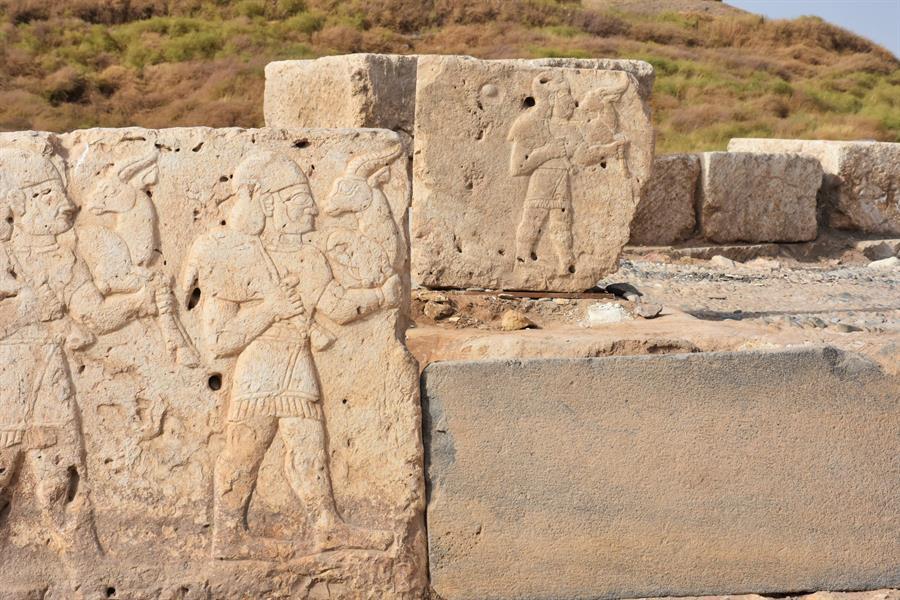
Carchemish, an ancient city on the Turkey-Syria border that once served as the most significant administration center of the Hittites, is gearing up to open an archaeology park for visitors.
Speaking to the state-run Anadolu Agency, head of Carchemish excavations Nikolo Marchetti, a professor at the University of Bologna, said the ancient city in the southeastern Turkish province of Gaziantep is “the richest historical place in the region.”
The Hittites ruled over Anatolia and Mesopotamia for centuries. From the administrative seat of Carchemish, kings ruled over the Hittite Empire’s lands in present-day Syria.
The ancient city’s location west of the Euphrates River also made it a significant junction for trade routes from Anatolia to Mesopotamia and Egypt in 2,000 B.C., Marchetti said.
The open air museum will offer walking trails alongside excavation areas, cafeterias, recreational areas, remnants of a Hittite palace and temple, an avenue with Roman columns, sculptures and a wall relief depicting an eagle-headed griffon. Visitors will be able to walk on the ancient stone-paved roads inherited from the Hittite Empire, Marchetti said.
Given the archeological park’s location in an active military zone, the park will be protected with wire fences along the border and other security precautions, said Gaziantep Governor Davut Gül.
The security features are expected to be completed by the end of the year, Gül said.
The excavation work in the ancient city was conducted on behalf of the British Museum between the years of 1878-1881, 1911-1914 and 1919-1920. Excavations resumed in 2011 and have been ongoing ever since thanks to an agreement between Turkey and Italy, the professor said.
“When opened as an archeological park, this will attract attention of the tourists,” he said.
Gaziantep Governor Gül said Carchemish hosted many civilizations throughout history and left the Turks with the “most precious artwork of the Hittites.” “People will be able to walk around this artwork,” he said.
The ancient city, known as one of the most important places in Near East archaeology, has traces of the Hittite civilization as well as the Assyrian, Hellenistic and Roman eras.